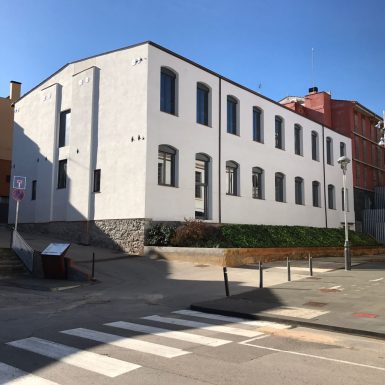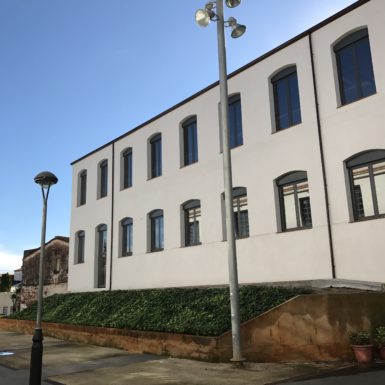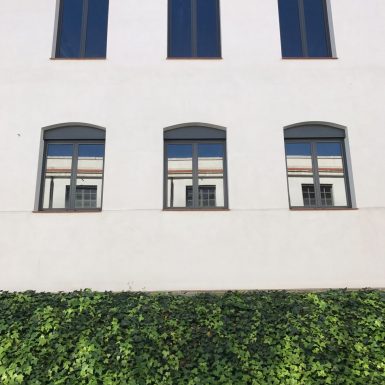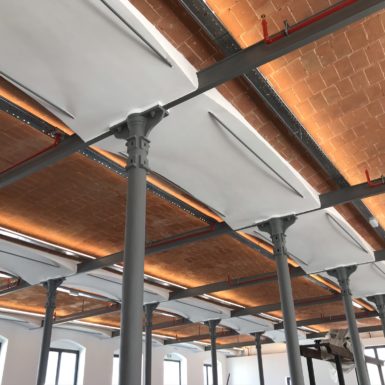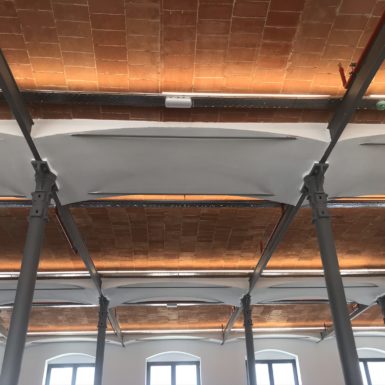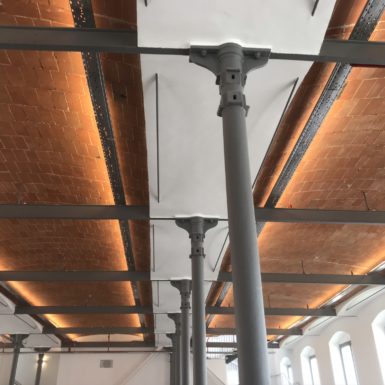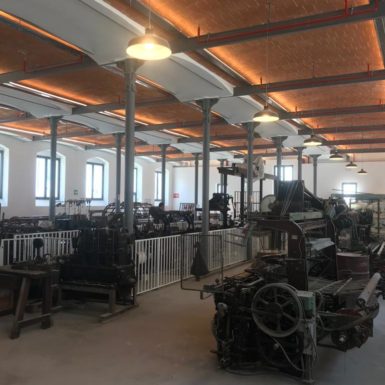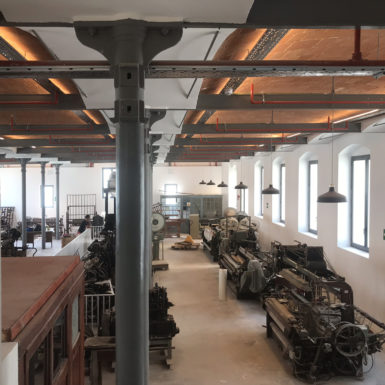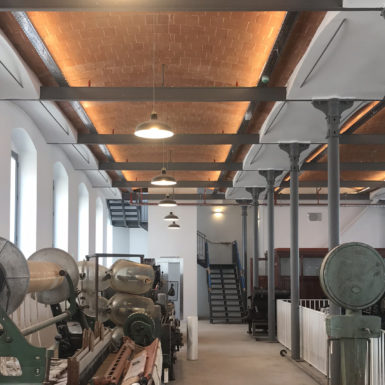GALLERY
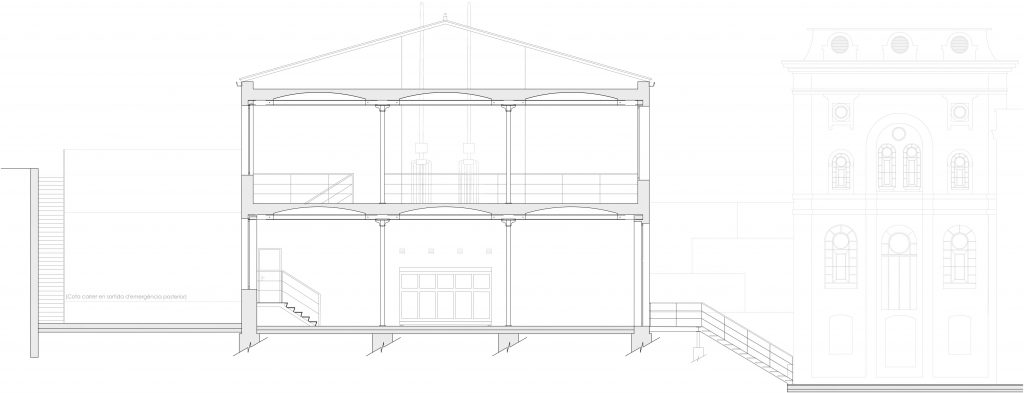
The Nau Vella de Can Manyer (the Old Can Manyer Factory) is an industrial building constructed in 1882 that, based on its date of construction and architectural style, is attributed to the architect Rafael Guastavino. This building was part of the Can Manyer industrial complex, consisting of two structures with very similar characteristics (one of which was recently renovated and converted into the municipal library) and a third structure (the La Força building) of much smaller size, that is currently unused. The three spaces form a U-shaped complex, with a semi-enclosed central patio. This complex is integrated under the designation of BCIN La Massa (La Massa Theatre, Vilassar de Dalt) as a cultural asset of national interest. The nearby theatre itself was a project by the same architect.
The museum building has a rectangular floor plan. The ground floor is intended for use as the museum’s display area and the second floor, provisionally, will serve as storage space. In the fourth and final phase of the project, the second floor will be adapted as an exhibition hall and the original third level will be reconstructed to serve as a bar and terrace area, with the intent of recreating the original size and structure.
The object of the project will be principally to renovate and reinforce the building’s structure, of great architectural value and the most important legacy of the architect Guastavino. The renovation of the Nau Vella de Can Manyer has been divided into the following four phases:
Phase 1 (completed): Minimal restoration of the building’s interior and the transfer of the museum’s machines to their new location.
Phase 2 (completed): Restoration of the building’s exterior with the recovery of the façade’s original composition and the provision of a new access through the main façade.
Reconditioning of the building’s interior with the restoration and renovation of the structural cast iron columns and the Catalan vaults that support the second floor.
Phase 3 (completed): New connections for the electrical and water services, renovating the interior space for use as a museum on the ground floor and as a storage area on the second floor with the provision of toilet facilities.
In order to take advantage of the factory’s industrial design elements, some of the original furnishings and interior walls of the building will be restored and adapted for use in the new textile museum.
Phase 4: Recovery of the building’s original size with the reconstruction of the third level over the three bays at the extreme west end of the building, disassembled in 2007.
